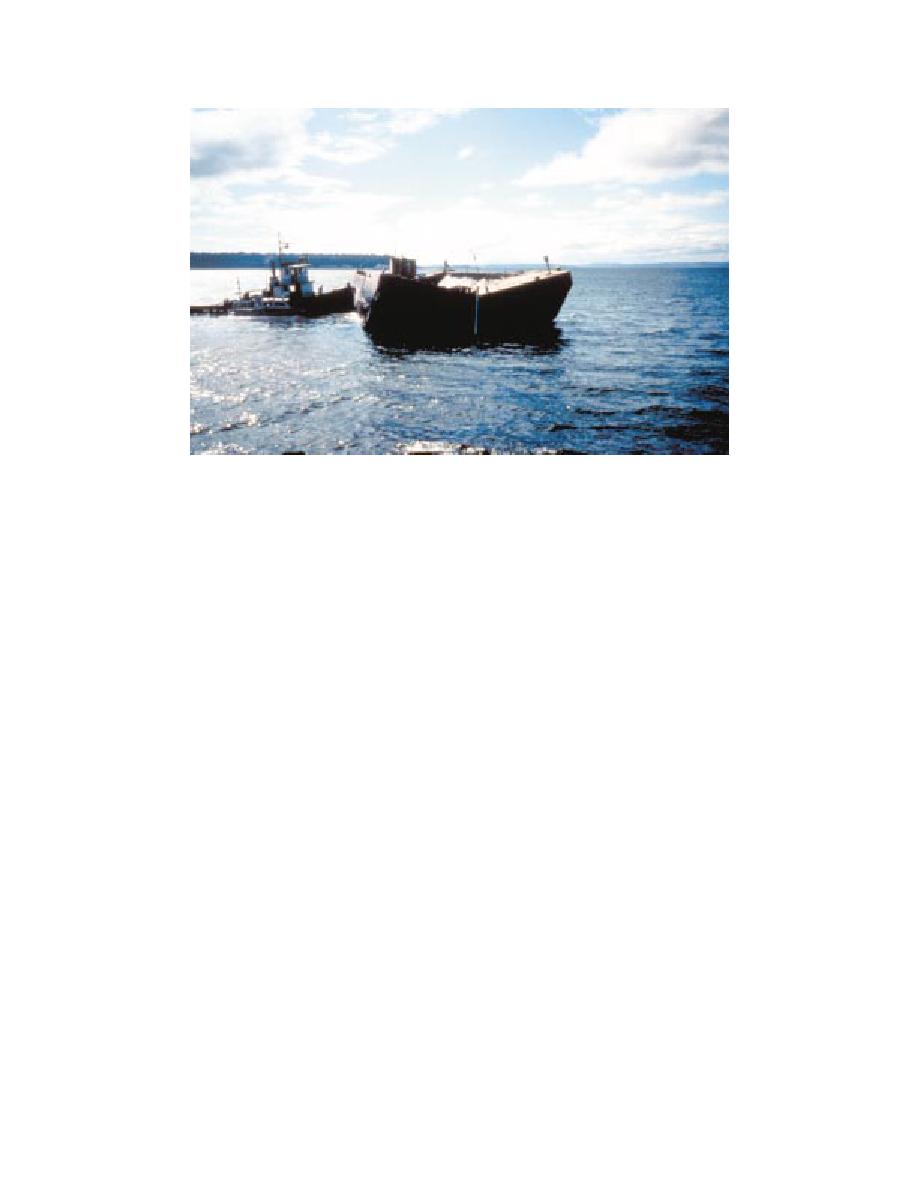 |
||
|
|
||
|
Page Title:
Hydraulic washing of coarse sand |
||
| |||||||||||||||
|
|
 Figure 4. Spreading technique for capping by barge movement
Spreading of thin layers of cap material over large areas can also be ac-
complished by gradually opening a conventional split-hull barge while un-
derway by tow. These techniques were used for in situ capping operations
at Eagle Harbor, Washington (Sumeri 1995).
Hydraulic washing of coarse sand
Granular capping materials such as sand can be transported to a site in
flat-topped barges and washed overboard with high-pressure hoses. Such
an operation was used to cap a portion of the Eagle Harbor, Washington,
Superfund site, forming a cap layer of uniform thickness (Figure 5)
(Nelson, Vanderheiden, and Schuldt 1994). This technique produces a
gradual buildup of cap material, prevents any sudden discharge of a large
volume of sand, and may be suitable for water depths as shallow as 10 ft
or less.
Spreading by hopper dredges
Hopper dredges can also be used to spread a sand cap. During the sum-
mer and fall of 1993, the Port Newark/Elizabeth capping project in New
York Bight used hopper dredges to spread a sand cap over 580,000 cu yd
of contaminated sediments. To facilitate spreading the cap in a thin layer
(6 in.) to quickly isolate the contaminants and to lower the potential for re-
suspension of the contaminated material, conventional point dumping was
not done. Instead, a split-hull dredge cracked the hull open 1 ft and re-
leased its load over a 20- to 30-min period while sailing at 1 to 2 knots.
Also, as an alternative means of placing the cap, another dredge used
pump-out over the side of the vessel through twin vertical pipes with end
31
Chapter 5 Equipment and Placement Techniques
|
|
Privacy Statement - Press Release - Copyright Information. - Contact Us - Support Integrated Publishing |